-
Posts
1,046 -
Joined
-
Last visited
Content Type
Profiles
Forums
Gallery
Events
Articles
Posts posted by sigistenz
-
-
I believe that coin from the Elmen's auction is also the CM coin, as it has their typical CM "5". I know, it's shocking!
 I looked through the last 3 catalogs on Friday, and I noticed this for this coin too!
I looked through the last 3 catalogs on Friday, and I noticed this for this coin too! They don't exactly say that on Russian forum openly, in terms of pointing it out that "5" is the clue (knowledge is buying power for them, so they don't scream about it), but they hinted and pushed me into this direction, and it seams that way...
Interestedly enough, I also seam not being able to find any coins with Dassier eagle from EM mint apart from the ones that were shown by G.S.E., and they supposedly a more common variant! That's a bit strange... If you find any good quality pictures, can you please share with me? Also, Sigi, is it OK to use some of your coins' images (with reference to your site) for a small article I started working on about Dassier eagles?
Thank you for the list of "5"s of (EM) and (CM).
 I understand fast but it takes time...
I understand fast but it takes time...I will look for pictures and share what I find.
Of couse you may use any or all of my own pictures. Know what? (but promise to keep the secret!):-
I like to show off my coins.
Best, Sigi
-
-
Sigi look at the pictures of EM coins that GSE shared (and Eugene and I both copied), all the EM 5s are slanted, almost like cursive. I think that is a good tell for the EM vs CM. Your coins have more upright 5s, and being in a very good shape they seem to lack the ruffled feathers of the EM eagles.
Thank you Alex, I did not realize at first, understanding only by and by. I will have to look for a true (EM) but good grades are hard to find (outside Russia). They were often crudely struck and the earliest date circulated the longest time.
Today I got word that I was lucky at Elmen's latest auction (I don't have the coin yet, will show off as usual) .
Best, Sigi

-
-
WOW, looks good. Genuine, never polished. Congratulations

Sigi
.
-
Hi Eugene, thank you for the patience with me. As you know I do not understand much Russian, so I cannot suck much honey out of the Russian forum. If I understand correctly, the typical 5 would be sufficient to tell a coin (CM), regardless of the orbcross/scroll thing?
That "5" along with a Dassier eagle would also indicate (CM)? If so, the coin from the Brekke Collection, recently auctioned by World Wide Coins of Calif. (Elmen) is also (CM)?

Sigi
-
-
The later 18th century 5 kopek coins are a prime example. They must have been saved instead of being scrapped - I have quite a few of them.
That is the stuff I collect. I imagine that the 1758 5kopeks and the later dates circulated at least until 1810 as the same weight standard prevailed.
But what about the 1762 10 kopeks?

Sigi
-
-
Hi Eugene, thank you very much - I do not want to hurt you
 , you are very nice. But I think this eagle business is worth at least one separate thread. Let's start it separately.
, you are very nice. But I think this eagle business is worth at least one separate thread. Let's start it separately.My point was the 1758(EM) versus 1758(CM) - how to tell the mint. We have the 2 different globecross/scroll configurations indicating either (EM) or (CM). There are the eagles. It also has been stated that (CM) can be recognized by its typical "5" of 1758. And that I think is not correct. See below four (CM) "5"s.
The 1st one is mine which I presented above.
The 2nd one is the Kaostram/Andrey piece at the beginning of this thread (with the white circles).
The 3rd and 4th ones are from the Russian forum (your link).
The "5"s are not alike.
My conclusion for my personal use: It is the globecross/scroll configuration that indicates reliably the anonymous mint (EM) or (CM).
Sigi
.
-
The tousled eagle (as on the Dassier rubles) appeared already on a part of Scott's 1757 rubles (the small head on 1754-1757 СПМ).
I don't know by heart if that tousled eagle must be attributed to Scott's last year or to Dassier. The Dassier portrait appeared only on a few 1757 rubles, whereas that eagle survived to 1760 rubles. So the tousled eagle was maybe not a job of Dassier's ???
But that does not concern the (EM) - (CM) problem.
I'll have to try to go thru the lenghthy Russian thread Eugene provided above. Hopefully there can be found something about the (EM) versus (CM) features.
Sigi
.
-
-
-
Thank you, Eugene for enlightening me about the difference between (EM) and (CM). I also appreciate the link to the Russian forum. Though not understanding all of it I see that the great majority of the 1758 pictures show (EM) coins. (CM) seems to be pretty scarce.
For me the most striking difference is the eagle's right wing. Plus the cross on the orb compared to the scroll.
Please transmit my hello
 to Andrey/Kaostram .
to Andrey/Kaostram .Sigi
.
-
Thank you - these early 5kop. are often poorly struck. I am happy with this one AND that it is the scarcer Sestroretsk variety.
Sigi

-
-
Is this only for 1758, or the later years as well?
Nice find, Sigi! Im off to check my shoebox for a '58 and have a look!
This mini-variant appears only with 1758 date (and the Sestroretsk mint contributed only to that date).
Did you find any in that shoebox?

-
The 5kop1758 were minted w/o mintmark in Ekaterinburg (mainly) and in Sestroretsk (a small part). For a long time it could not be said whether a 1758 copper piatak originated from (EM) or (CM) mint.
About 1/2 year ago our friend Eugene "extant4cel" posted the newly found solution of the problem as below (probably from a Russian forum):-
Note that the horizontal bar of the orb's cross points into the scroll (EM) or slightly above (CM) and the more symmetrical eagle wings at (CM).
(CM) is much more difficult to find. Proudly bragging my new find below

Sigi
-
-
Welcome back!

Sigi
-
My point is with all respect to grading company's we should look inside the holder and collect coins ,not the numbers on the holder.Collectors ,dealers,graders can have different opinion according on knowledge and experience.
Rarenum
Not to forget the fakes becoming genuine once graded

Sigi
.
-
Good to see you back here
 I missed you.
I missed you.There were two types of the 1802KM 5kopeks. Same metal, same size, same date. The rarer variant of the two is cheaper, the abundant variant is dearer. That was my point - it looks absurd.
What do you think about it?
Sigi
-
-
Sigi, did you receive this coin yet ? Is this an original ?
I did not bid - the grade was not nice enough AND I do not risk to have sent something from Russia

Sigi
-
-
Hi Sigi...the second type is of course rarer, despite what Wolmar might think.
The average prices....trickier. To do it right you'd need to factor in condition and sale-date across the data (the m-dv numbers go back quite a few years). You also need to be robust against a single high or low price skewing the answers..,using a median (not average) price can help, and even after all that, averages are still uncertain just because there are so few data points. Simple averages are not always what they seem. Well....they are...you just need to be careful with interpretation.

I guess what you'd like to compare is each type - today and in the same condition. The answer may turn out to be exactly what you've already concluded but I'd be statistically happier if it were a bit more rigorous

Steve, I did not do a scientific research. Of course you are right with all you say

But the mix of grades applies to both variants. I did not take into account Gorny's crazy €24,000 for one of the 1st type coins (this would have been still more in favor of the 1st type) but counted only the "normal" looking results.
12 times the abundant 1st type went over $1,000 or over $2,000 and once even over $3,000.
The rare 2nd type only once went slightly over $1,000. http://www.m-dv.ru/m...d,34/types.html
A funny thing happened. When I prepared my post my wife asked what I was doing. She doesn't know a thing about coins and could not tell a Chinese coin from a Russian coin. She glanced at the 2 pictures. Without being asked, she burst out, " I like the upper one (1st type) better."
And so then said BKB and Igor!
It seems that the abundant 1st variant is more popular and more in demand, people are willing to pay more than for the rare 2nd type.
Sigi
-
In 1802 a new 5 kopek design was adopted.
The KM mint changed its dies during the year which led to 2 KM types.
Which one is worth more?
WOLMAR rates the 1st type higher,
KONROS rates the 2nd type higher.
Who is right?
МОНЕТНЫЙ ДВОР http://www.m-dv.ru/monety-rossii-1700-1917/kid,16/mid,4/nid,34/types.html
compiles auction results. Over the last years
the 1st type appeared 38 times averaging $ 1.139
the 2nd type appeared 13 times averaging $ 672
which means that the rare coin is worth less than the abundant coin.
Sigi
 :confus:
:confus: -
Thank you everybody. This is the fruit of watching eBay every 3rd day. More than 6 months of patience did it take to find anything - it was this here.
Sure this is a heap of money (to me),
 but for 1/2 year there had been no coin expenses.
but for 1/2 year there had been no coin expenses.I still don't have it in hand. I hope it will not be lacquered.
Sigi
-
-
Hi, I did not want to wake up sleeping dogs/competitors, so I show the eBay item only now, having hunted it down at a reasonable price.
It could be nicer but looks honest.
Will present it when in hand
 I have to say more about this coin.
I have to say more about this coin.Sigi
-
That would be a nice set! The 1997 Brekke-Bakken update lists only 5kop1790/89EM 5kopek and denga
(not your 2kopek). But the listing is far from complete.
Sigi
.
-
A nice coin, Josh. The overdate is more convincing than mine. Congrats

Sigi
-
-
Sigi, yours is very, very sexy.

Thank you, you made her day

Sigi
-


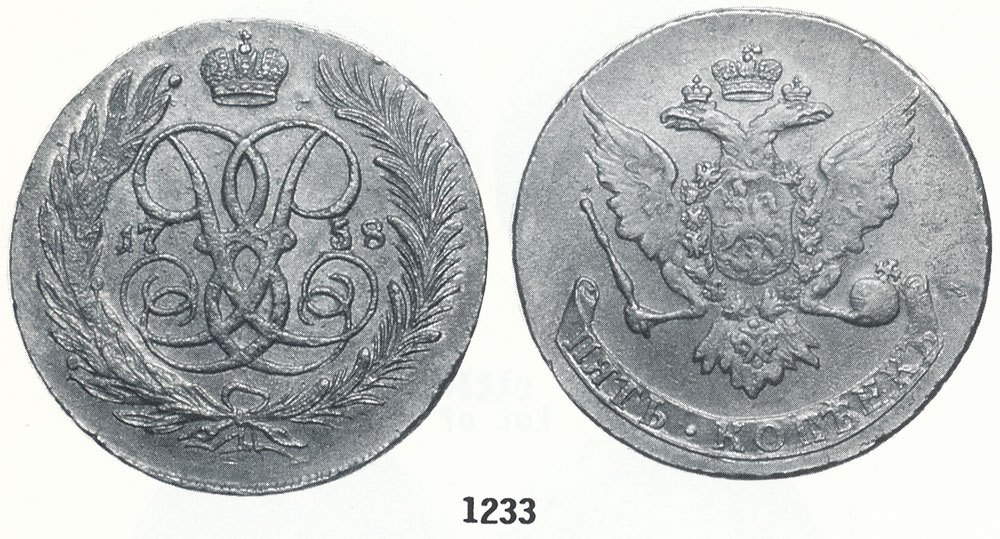
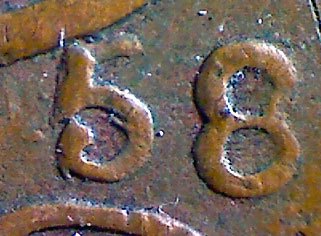

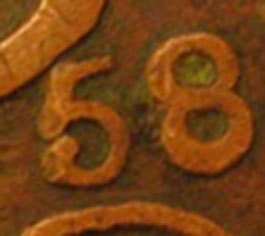
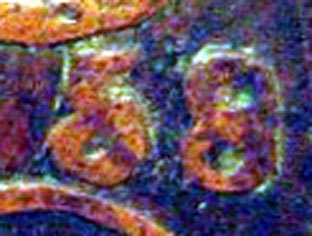






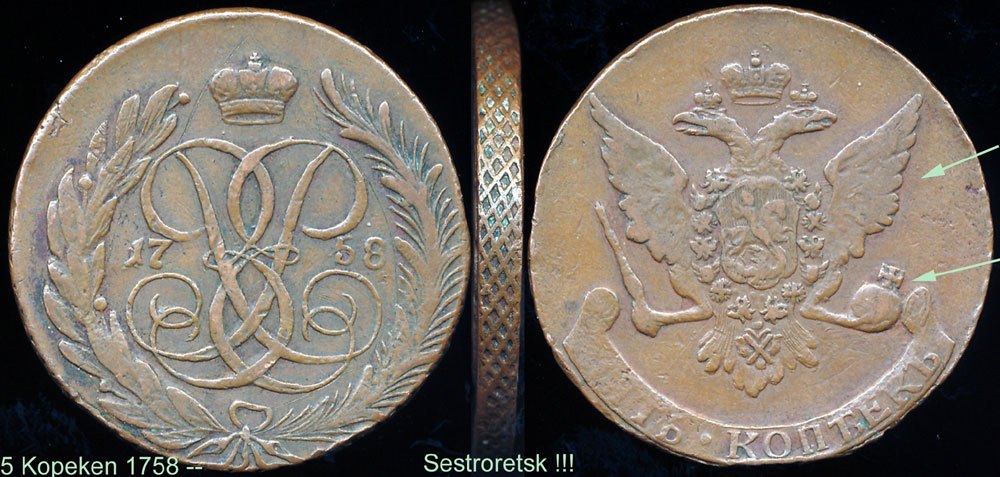
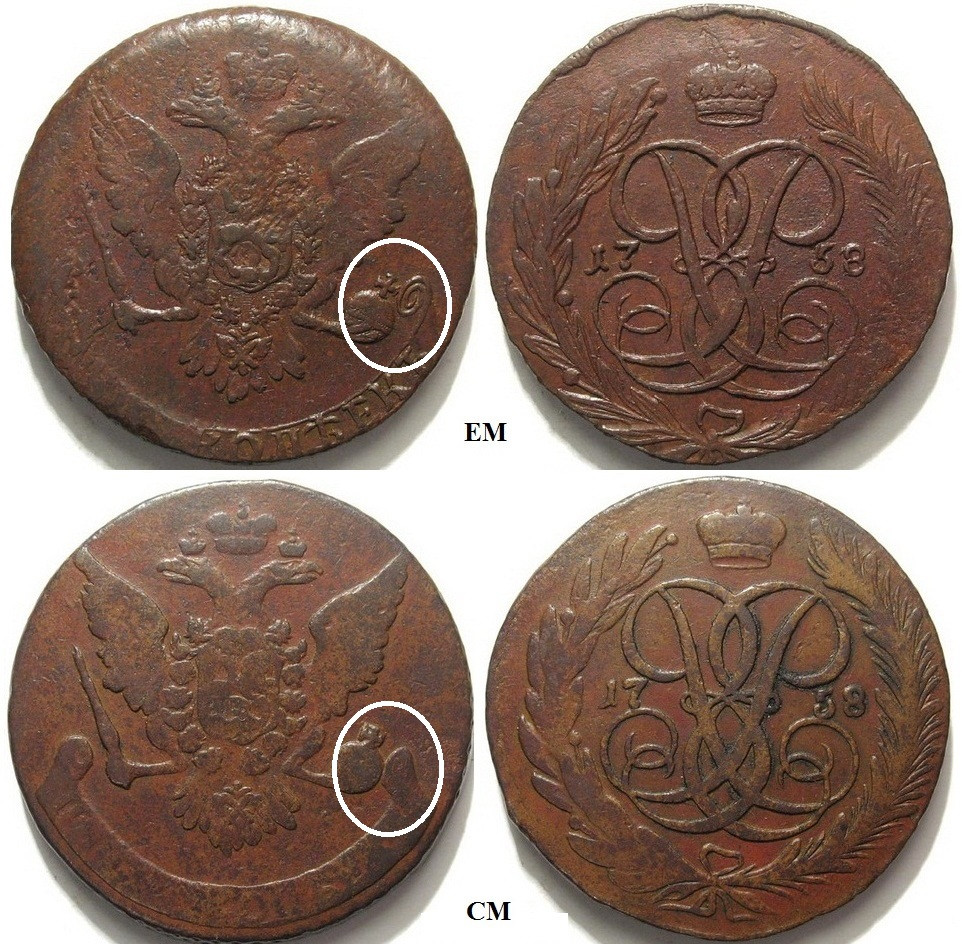
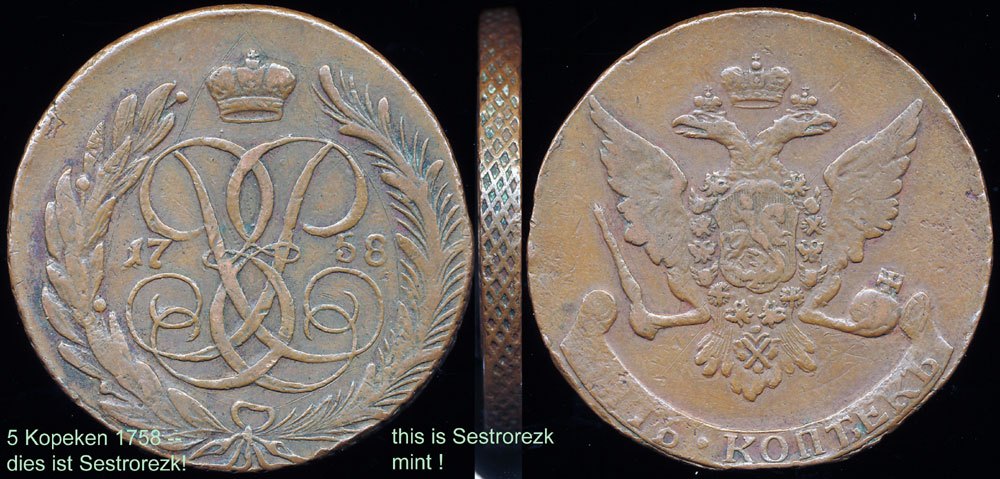
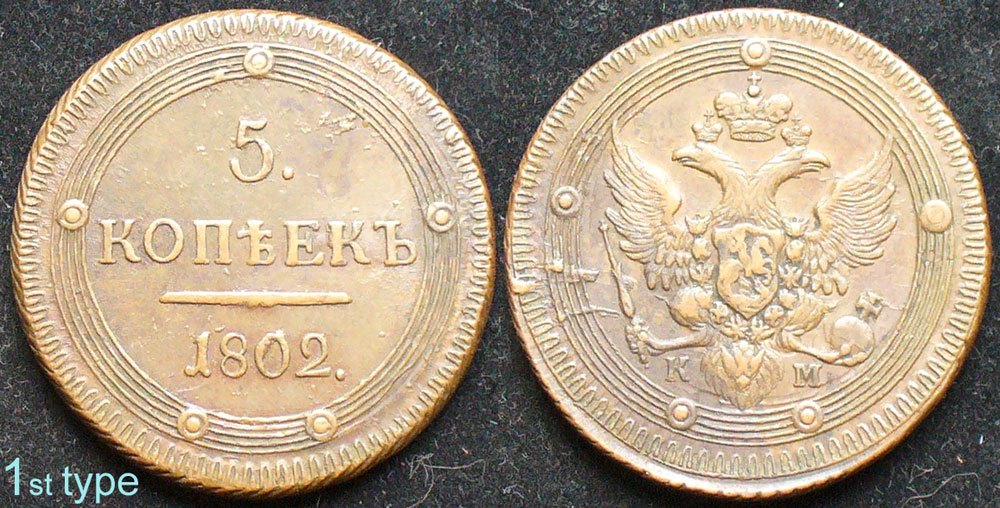
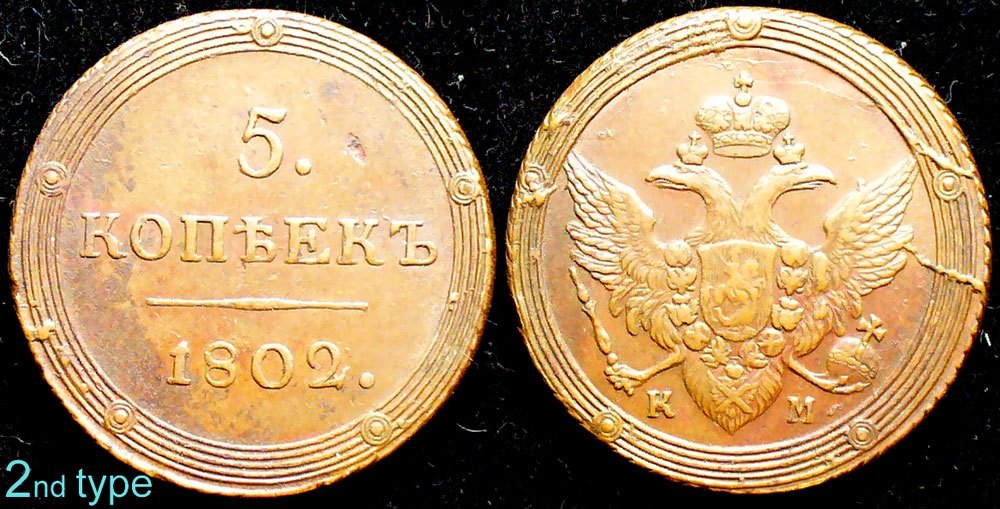
Copper 5kop1758-- (Sestroretsk mint)
in Russian Coin Forums
Posted
Here is another pair (EM) and (CM), it appeared in some Russian auction about 4-5 years ago, I do not recall where.
Sigi
.